Ever wondered what our world would be like if steeping a batch of fire cider typified autumn as much as setting into new study routines, leaf watching, or visiting the pumpkin patch? I imagine we’d all be a bit more vigorous and hardy all winter. We’re all a part of creating that world, person by person, a culture of wellness.
If you’d like to make traditional Fire Cider, I have the recipe I learned from Rosemary Gladstar in the 1980s. It is in the chapter on herbal vinegars in my book, The Herbal Kitchen. I made it that way every year for decades. You can find that recipe here.
Then turmeric was popularized and folks started adding turmeric and all kinds of things! The one ingredient that I don’t like in all the new recipes is jalapeno. I have seen many people react to jalapeno and wouldn’t use it in a “general public” recipe.
“This is one of my favorite remedies to use when you feel those VERY FIRST symptoms of not feeling well.”
So, I do really like the traditional recipe, but found that elderberry is a great addition that mellows out the intensity a bit. So with this recipe, I’ll be playing with a twist on the traditional fire cider recipe by adding the immune-supportive powers of elderberry.
Note: Elderberry Fire Cider takes some time. And consider making a little extra for a friend – maybe next year they’ll be sharing with you!
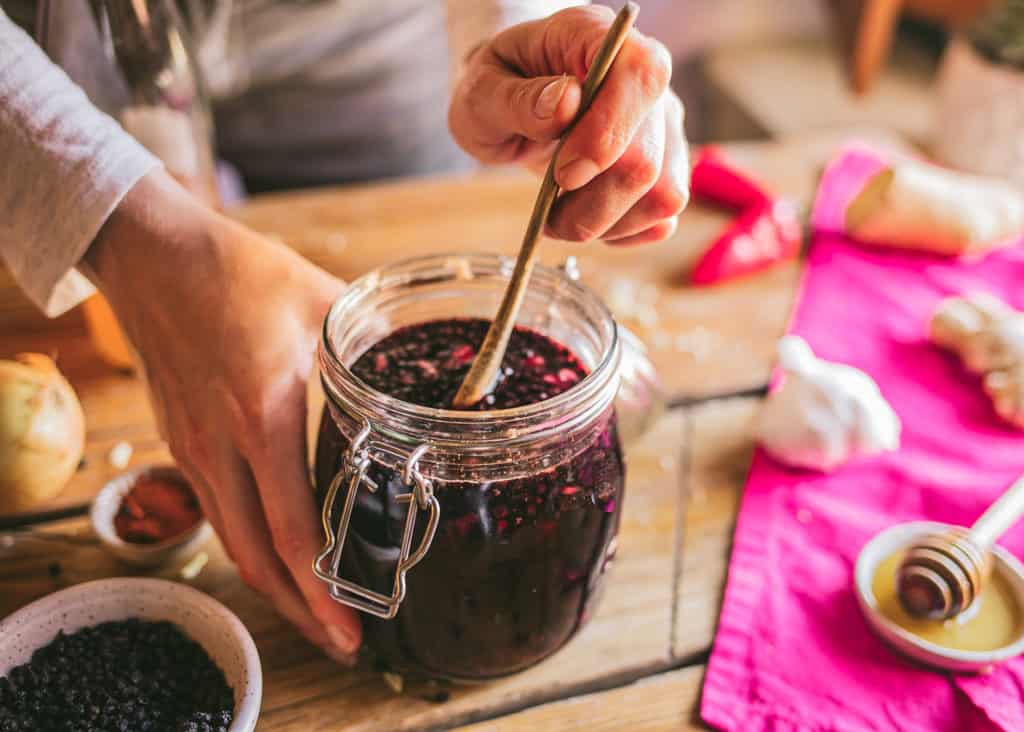
Getting Creative with the Classic Fire Cider Recipe
Fire cider is a brew of pungent herbs steeped in apple cider vinegar, taken at the first sign of cold or flu, or as a daily tonic during the colder months. The ingredients are so common that most are probably in your kitchen at this very moment: garlic, onion, ginger, horseradish, and cayenne. In my experience, fire cider helps clear the sinuses, stimulate circulation, improve digestion, and support overall immune function.
The one ingredient you may not have on hand is horseradish. Sometimes you can find it fresh in the specialty section of the grocery store. If you have to use dried horseradish, just beware that it is much hotter than fresh. So instead of using the two tablespoons of fresh horseradish called for, you would use one teaspoon of dried horseradish instead.
When Rosemary Gladstar, one of my herb teachers, brewed the first batches of fire cider in the 1970s, she was looking for a way to bring herbalism into people’s kitchens and build a culture of wellness through food.
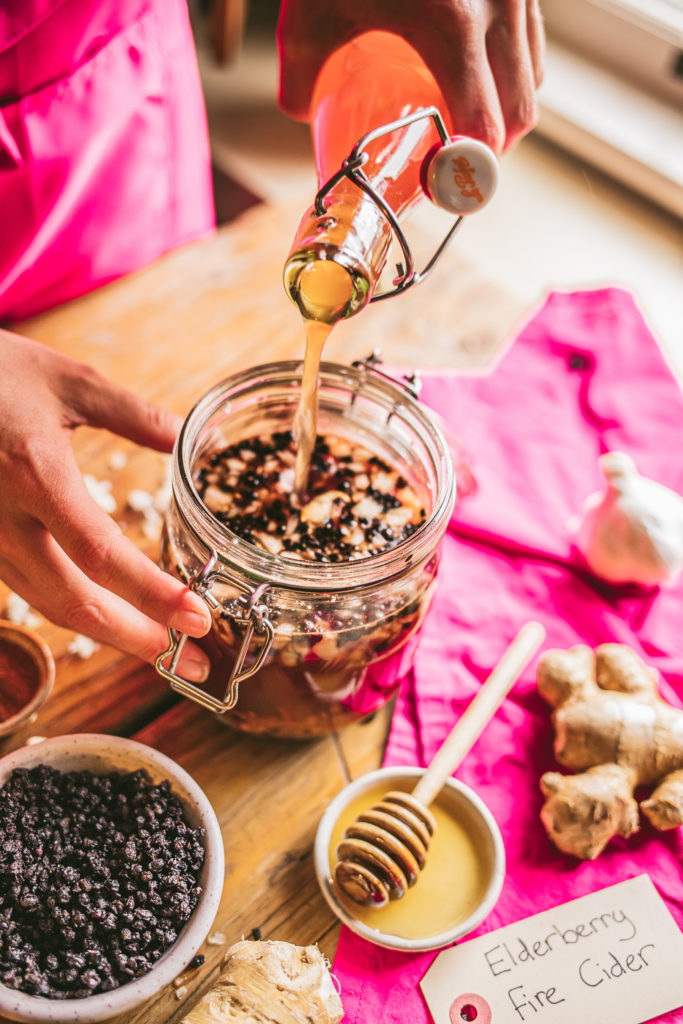
I can’t tell you how many times I felt something coming on and took my Fire Cider and the itchy throat or tired eyes just disappeared.
The thing about Fire Cider is that it really is a terrific remedy during the colder seasons and at the ONSET of not feeling well. If you are already sick and in bed and down and out, then Fire Cider might not be the right remedy. It is a hot remedy that pushes the fluids to the edge of the body and makes you sweat out a cold. You don’t want to push your body like that if you are already really sick.
So this is one of my favorite remedies to use when you feel those VERY FIRST symptoms of not feeling well. They are what I call the ‘pre-sickness’ symptoms.
Those symptoms that come on before you get sick, sometimes they can be subtle. Since my tonsils were taken out when I was 5 years old (that really should not have happened), my pre-sickness symptoms show up in my throat. At that very first sign of a scratchy throat, I know it is time for some Fire Cider. I will take 5 tablespoons in a day.
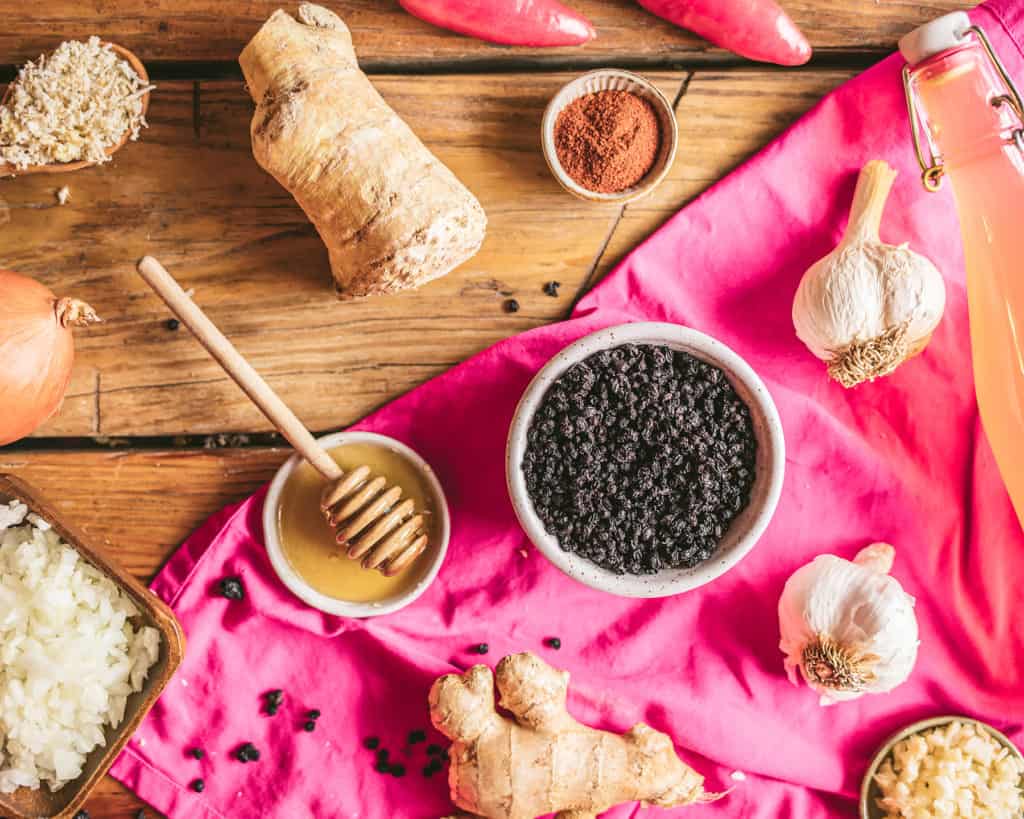
Stoking the Internal Flames
Made of pungent and warming herbs, fire cider is tart, sweet, and spicy. Here are the everyday ingredients that give this blend its impressive reputation:
Ginger increases circulation, warming the body and moving mucus congestion. It also helps stimulate digestion and can settle an upset stomach.
Horseradish has enzymes that stimulate digestion and promote regular bowel movements, an important part of the body’s detoxification process.
Onions help relieve congestion and contain compounds that aid digestion and can help even out low blood sugar.
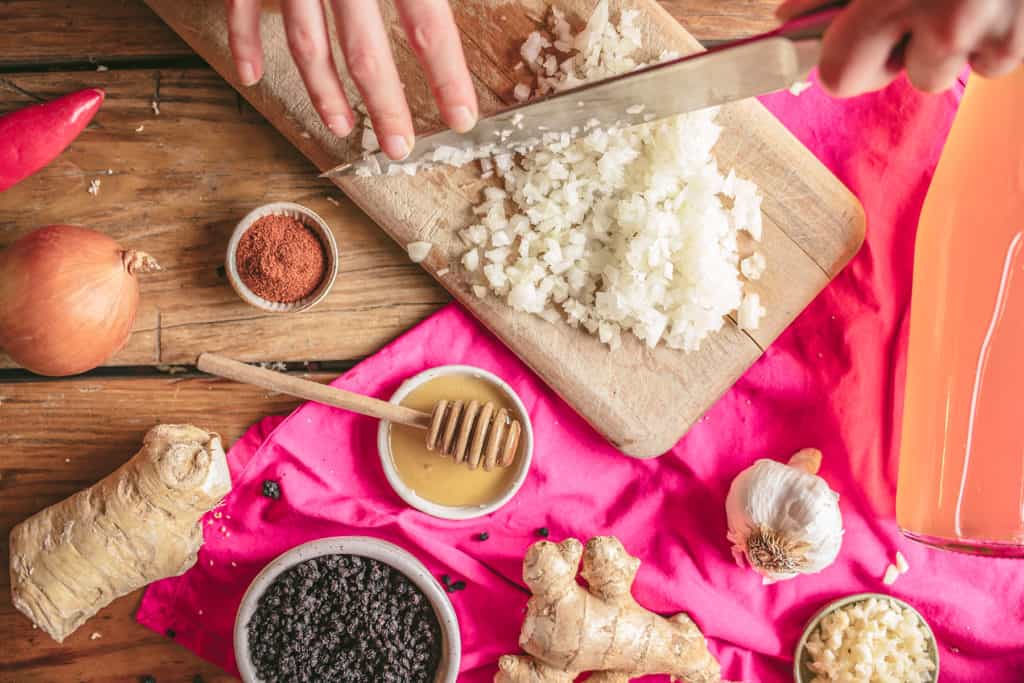
Garlic has been known to support health for so long, it’s been called “nature’s original remedy”. Researchers have found evidence that Sumerians were using it medicinally more than 4,000 years ago. Research suggests it supports immunity against various infectious diseases.
Cayenne, in my experience (as documented in The Herbal Kitchen), has a dual action against cold and flu, dissolving mucus and congestion while speeding overall recovery.
Elderberry, the star of this particular fire cider recipe, is one of the first herbs I turn to for cold and flu. Elderberry supports the immune system and has properties that inhibits flu virus from entering cells.
Honey has been used in folk remedies around the world for thousands of years, in part to make them pleasing to the palate. Raw honey also has antioxidant and immunomodulatory properties.
Elderberry Fire Cider
Ingredients
- 1/2 cup fresh elderberry or 1/4 cup dry
- 3 tbsp fresh grated ginger
- 2 tbsp fresh grated horseradish
- 1 yellow onion, finely chopped
- 4 cloves garlic, finely chopped
- 1/8 tsp powdered cayenne
- 4 cups apple cider vinegar
- Honey to sweeten
Instructions
- Combine herbs in a quart jar.
- Pour the vinegar, making sure it covers the ingredients by at least a couple of inches.
- Cap with a plastic lid to prevent the corrosion that occurs when vinegar touches metal.
- Let sit in a cold, dark place for one month, shaking occasionally and adding more vinegar if the fruit or herbs are sticking out above the vinegar.
- Decant by pouring through muslin and a funnel, into a sterilized jar. Don’t squeeze the muslin, which adds water, or your fire cider will be cloudy with a shorter shelf life.
- Add up to 2 cups honey to sweeten.
Get Fire Cider into Your Everyday Life
You can take Fire Cider as a preventive remedy in the fall, preparing for winter. You can also get creative in how you use it. I use it in marinades, salad dressing, I put a splash of it into my tea or also really enjoy putting it into Kombucha. Yum, Fire Cider Kombucha! Let me know your favorite ways to use fire cider in the comments below, or share your most successful riffs on the classic Fire Cider recipe!


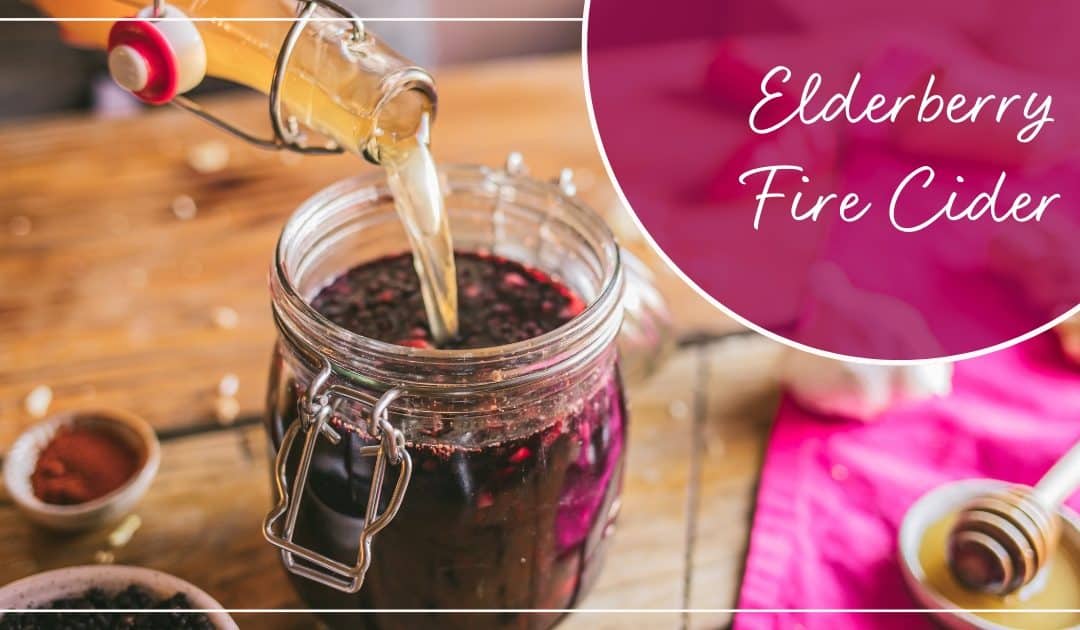




Thanks Kami. Cayenne powder, any kind in particular? Some are hotter than others, if I am mistaken, please correct me.
Love and peace.
Amy
You can use whichever cayenne powder you have already.
Hi I’m allergic to night shades and garlic. What do you suggest I replace these with?
This is probably not the recipe for you. There are so many other great syrups, immune honey and teas on my blog that don’t have so many things that you are allergic to